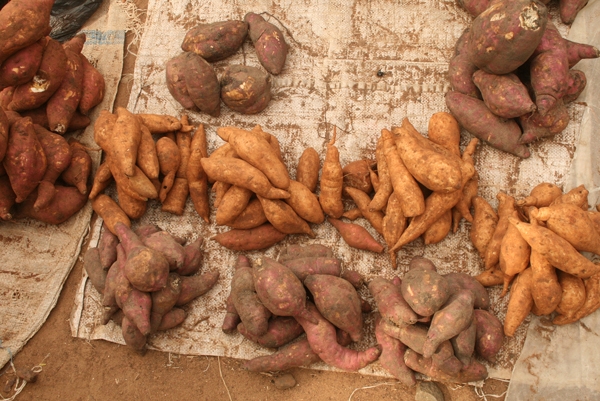What if you could significantly improve the nutritional quality of your diet, just by switching one of the vegetables you eat every day?
In parts of Africa, some people are doing just that by switching from yellow or white sweet potatoes to orange-fleshed varieties.

That orange color signifies the potato’s beta-carotene content, which our bodies convert to vitamin A. Vitamin A deficiency is the leading cause of preventable blindness in children and is crucial to the survival of children and pregnant women, according to the World Health Organization.
So scientists and organizations who are working to increase vitamin A in African diets have turned to the orange-fleshed sweet potatoes as a potential solution, wherever light-colored sweet potatoes loom large.
With funding from the U.S. Agency for International Development, Horticulture CRSP is working in Ghana to strengthen the entire value chain of orange-fleshed sweet potato — from farmers and food processors, to markets and consumers.
Though Horticulture CRSP is led by UC Cooperative Extension’s Elizabeth Mitcham at UC Davis, this project includes a team of international researchers with experts from Tuskegee University, Penn State and Ghana University. Together, they are working to:
- provide farmers with germplasm and best management practices
- teach women entrepreneurs to process orange-fleshed sweet potatoes into bread flour, purees and dehydrated chips
- formulate a weaning food for babies that incorporates orange-fleshed sweet potatoes with other, traditional foods
Find out more about this Horticulture CRSP sweet potato project (including a 2-minute video).
Did you know? In 2011 California was the second largest producer of sweet potatoes in the United States, with North Carolina leading the way (source). Find out more in this related ANR News Blog post or from the UC Vegetable Research and Information Center.